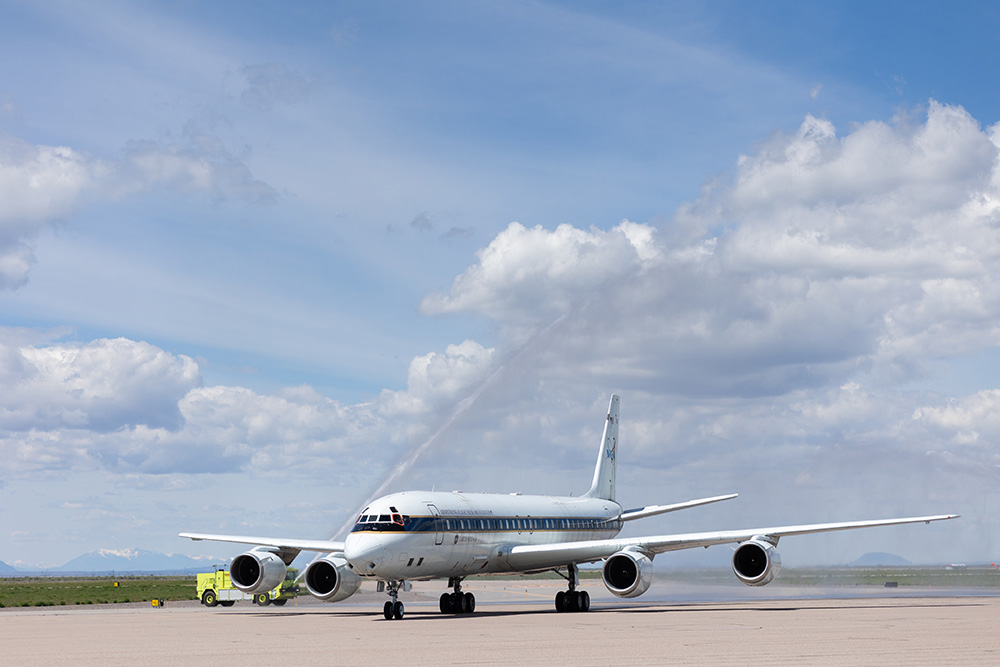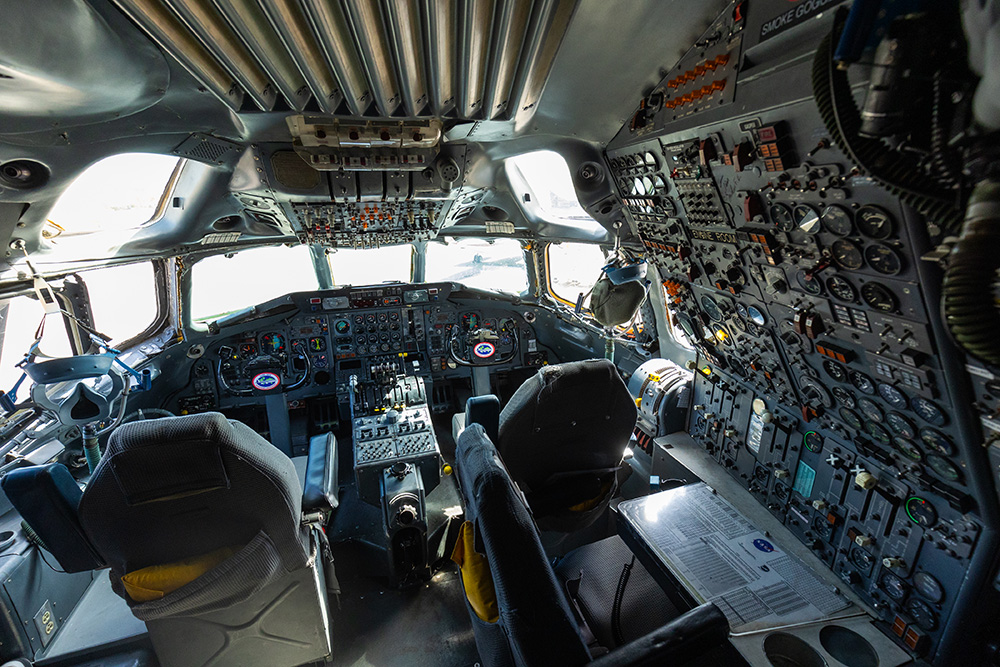Welcoming Historic NASA DC-8 Aircraft to Enhance Aircraft Maintenance Education
May 16, 2024

The world’s first and largest flying science laboratory now has a home at Idaho State University.
Thanks to a donation from the federal government, the historic NASA DC-8 aircraft, known for its decades of scientific missions, officially landed at Pocatello Regional Airport on Wednesday, greeted by ISU officials, community leaders and students from the Aircraft Maintenance Program.
As the largest flying science laboratory in the world, the DC-8 has been used to support NASA’s Airborne Science mission since 1987. This unique aircraft was first acquired by NASA in 1985 and collected data for experiments in support of scientific projects serving the world’s scientific community – including scientists, researchers, and students from NASA and other federal, state, academic, and foreign institutions.
“I have been lucky enough to work with this amazing team over the last four years, finding ways to help scientists do all kinds of science research. I’ve been fortunate enough to be a part of various science missions, from studying weather and hurricanes in the Virgin Islands to doing air quality research over large cities like New York,” said NASA DC-8 Deputy Project Manager Kirsten Boogaard. “The relationship between NASA and Idaho State University has innovated both research here on Earth, as well as the mission to the moon and beyond. Now, after approximately 150 science missions over 37 years, the DC-8 aircraft is joining the ISU family to train future aircraft technicians.”

Traditionally, an aircraft such as this would be placed in a museum, said Headquarters NASA Product Support Manager Taylor McQuain, but NASA always hopes to repurpose equipment when possible. The aircraft was donated to Idaho State’s Aircraft Maintenance Program by the federal government, and will continue its mission of creating an environment for learning.
“This particular donation benefits future generations in a different way- this way future generations will get hands-on learning,” McQuain said. “It is also unique in that, according to my contacts at GSA, this is believed to be the largest donation that the federal government has given to the state of Idaho.”
College of Technology Dean Jerry Anhorn said the donation will help the University to continue to train highly-skilled technicians ready to meet industry needs.
“The benefits of this donation extend beyond our university. By training highly skilled technicians ready to meet industry needs, we are contributing to a workforce that is versatile, innovative, and, above all, well-prepared,” Anhorn said. “These professionals will go on to ensure the safety and reliability of air travel, to innovate in the fields of aircraft maintenance and aerospace technology.”
Idaho State University President Robert Wagner thanked all who attended Wednesday’s event and made the donation possible, especially Ed Foster, Aircraft Maintenance Technology Program coordinator and an instructor in the program and Airport Manager Alan Evans. The donation, he said, provides Idaho State University students with a unique opportunity they can’t receive elsewhere.
“What a remarkable piece of history – for nearly three decades, this aircraft has served as a premier flying science lab, contributing to groundbreaking research,” Wagner said. “And now, it embarks on a new journey, here at ISU, that will significantly impact our students and their futures.”

Categories:
